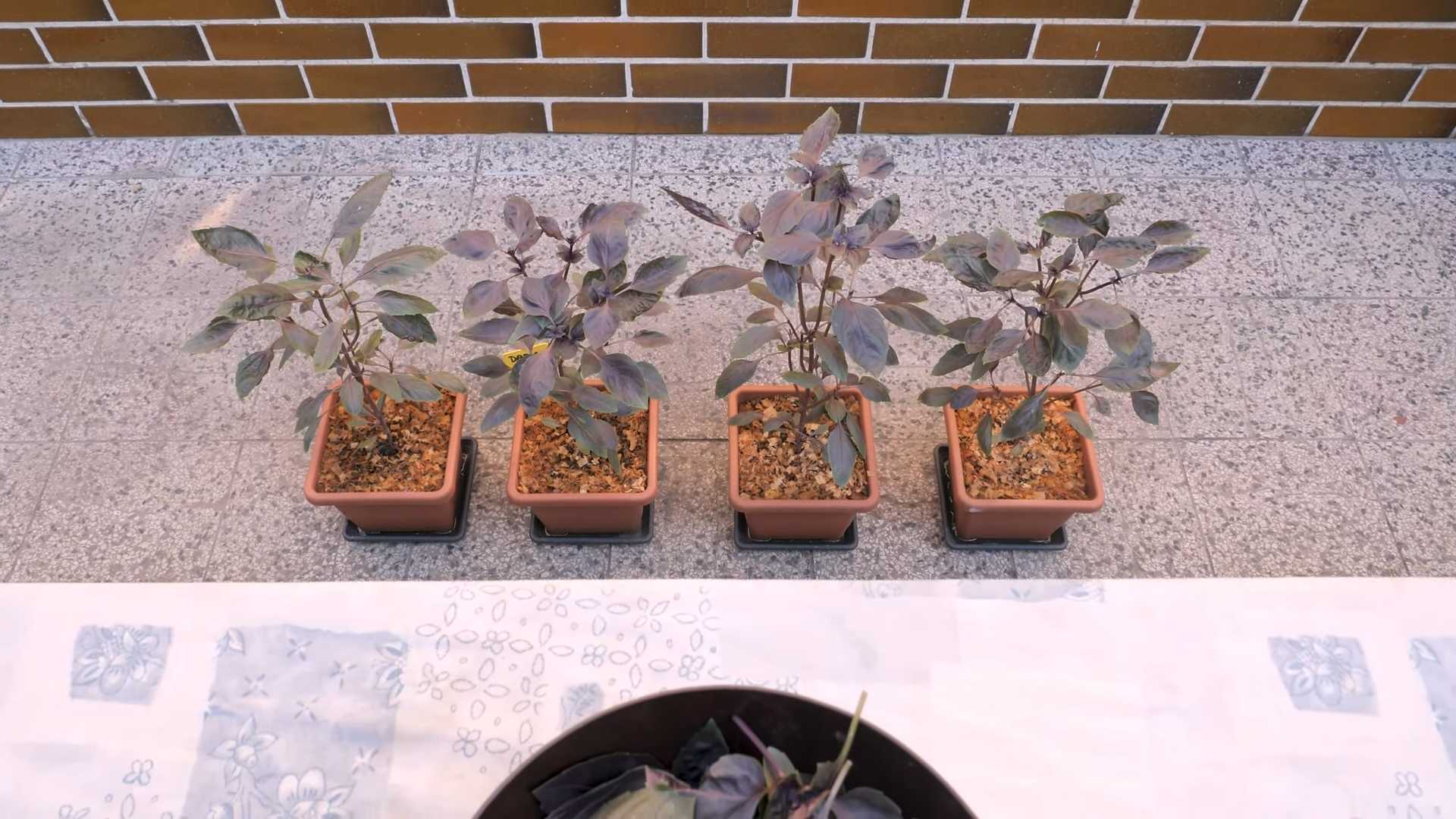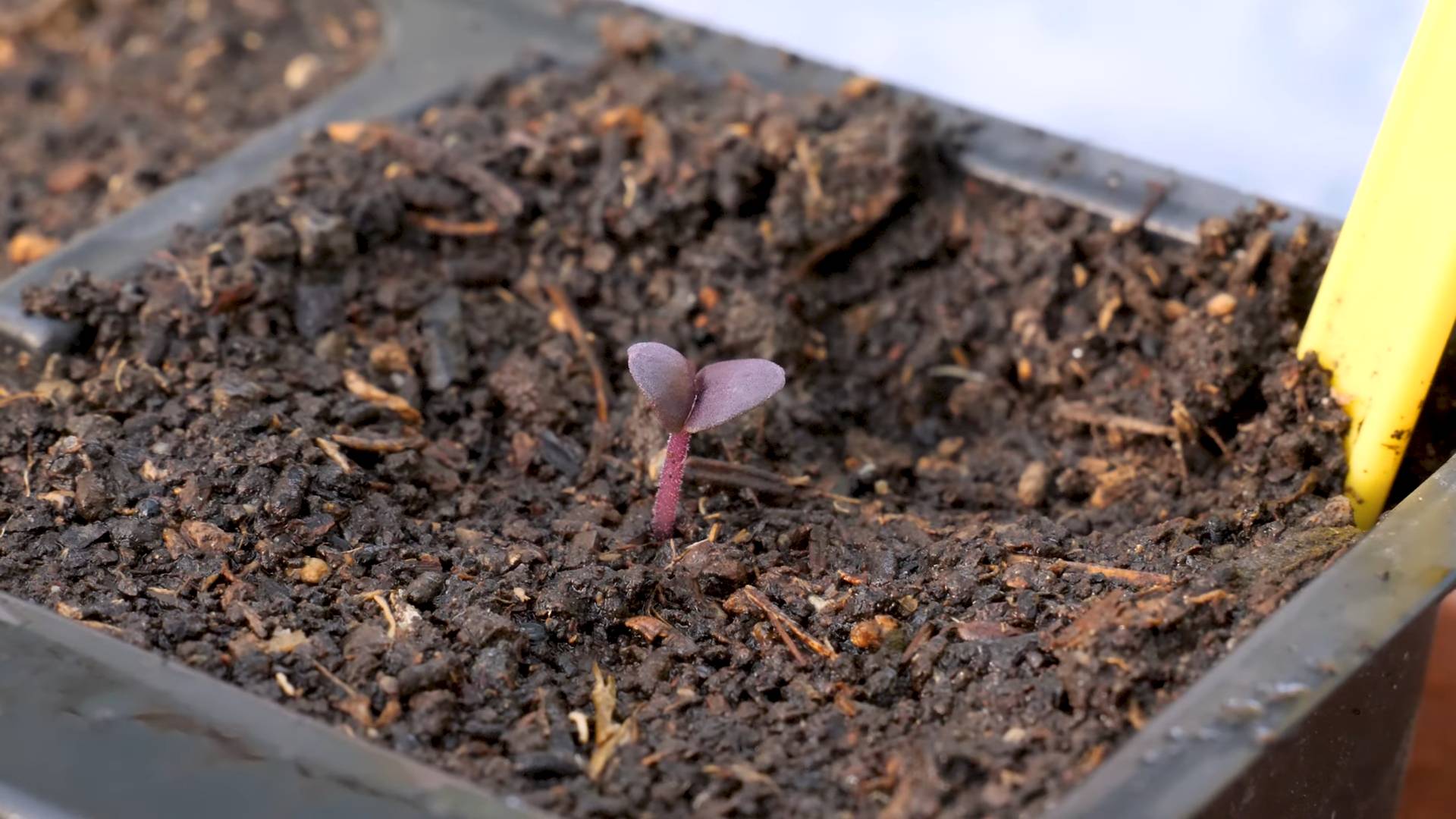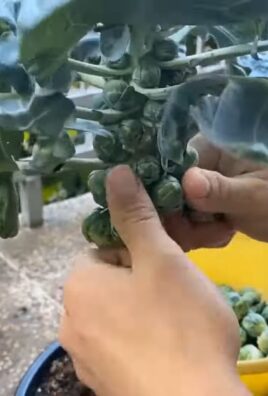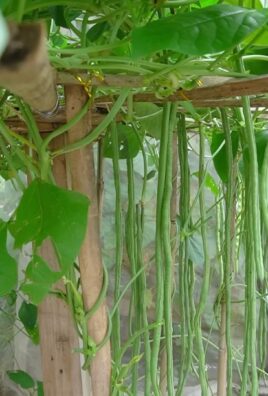Purple basil container gardening: sounds fancy, right? But trust me, it’s easier than you think! Have you ever dreamed of snipping fresh, vibrant basil leaves right from your own patio to add a burst of flavor and color to your meals? Well, dream no more! This DIY guide will unlock the secrets to successfully growing gorgeous purple basil in containers, even if you think you have a black thumb.
Basil, in general, has a rich history, dating back thousands of years. In some cultures, it’s considered sacred, while in others, it symbolizes love and good fortune. But beyond its historical significance, basil is simply delicious and incredibly versatile in the kitchen. And purple basil? It takes things to a whole new level with its striking visual appeal and slightly different flavor profile.
So, why should you try purple basil container gardening? Because it’s a fantastic way to enjoy fresh herbs, even if you don’t have a sprawling garden. Plus, it’s a rewarding and therapeutic hobby. Imagine the satisfaction of nurturing your own plants and then using their leaves to create amazing dishes! This article will provide you with simple, step-by-step instructions and insider tips to ensure your purple basil thrives. We’ll cover everything from choosing the right container and soil to watering and harvesting techniques. Let’s get started and transform your space into a fragrant, colorful oasis!

Growing Vibrant Purple Basil in Containers: A DIY Guide
Hey there, fellow plant enthusiasts! I’m so excited to share my experience with growing gorgeous purple basil in containers. It’s easier than you might think, and the results are absolutely stunning – not only do you get a flavorful herb for your culinary creations, but you also add a pop of vibrant color to your patio, balcony, or even your kitchen windowsill. Let’s dive in!
Choosing the Right Variety and Container
First things first, let’s talk about the basil itself. There are several varieties of purple basil, each with its own unique characteristics. Some popular choices include:
* ‘Dark Opal’: This is a classic, known for its deep purple leaves and strong flavor.
* ‘Purple Ruffles’: As the name suggests, this variety has beautifully ruffled, purple leaves and a slightly milder flavor.
* ‘Red Rubin’: Another popular choice with deep reddish-purple leaves and a robust flavor.
I personally love ‘Dark Opal’ for its intense color and flavor, but feel free to experiment and find your favorite!
Now, onto the container. The size of your container will depend on how many basil plants you want to grow. Here are some general guidelines:
* For a single plant: A container that’s at least 8 inches in diameter and 8 inches deep should be sufficient.
* For multiple plants: Choose a larger container, at least 12 inches in diameter and 10 inches deep, allowing ample space for each plant to grow.
Important Considerations:
* Drainage: Make sure your container has drainage holes! Basil hates sitting in soggy soil.
* Material: You can use terracotta, plastic, or even repurposed containers. Just ensure they’re clean and suitable for planting. I’ve had great success with terracotta pots, as they allow the soil to breathe.
Preparing the Soil and Planting
The right soil is crucial for healthy basil growth. You’ll want a well-draining potting mix that’s rich in organic matter. Here’s what I recommend:
* High-Quality Potting Mix: Avoid using garden soil, as it can be too heavy and compact for container gardening.
* Amendments (Optional): You can add compost or aged manure to the potting mix to boost its nutrient content. I usually add a handful of compost per gallon of potting mix.
Planting Time!
1. Fill the Container: Fill your chosen container with the prepared potting mix, leaving about an inch of space at the top.
2. Create Planting Holes: Gently create small holes in the soil, spaced according to the mature size of your chosen basil variety. For ‘Dark Opal’, I usually space them about 6-8 inches apart.
3. Carefully Remove the Seedlings: If you’re using seedlings (which I highly recommend for beginners), gently remove them from their nursery pots, being careful not to damage the roots.
4. Plant the Seedlings: Place each seedling into a planting hole and gently backfill with potting mix.
5. Water Thoroughly: Water the newly planted basil thoroughly until water drains out of the drainage holes. This helps settle the soil and encourages root growth.
Caring for Your Purple Basil
Now comes the fun part – nurturing your basil plants and watching them thrive! Here’s what you need to know:
* Sunlight: Purple basil needs at least 6-8 hours of sunlight per day. Place your container in a sunny location, such as a south-facing balcony or windowsill. If you don’t have enough natural light, you can supplement with a grow light.
* Watering: Water your basil regularly, especially during hot weather. The soil should be consistently moist but not soggy. Check the soil moisture by sticking your finger about an inch into the soil. If it feels dry, it’s time to water. I usually water every 1-2 days during the summer.
* Fertilizing: Basil is a heavy feeder, so regular fertilization is important. Use a balanced liquid fertilizer diluted to half strength every 2-3 weeks. You can also use a slow-release fertilizer at planting time.
* Pruning: Pruning is essential for encouraging bushy growth and preventing your basil from flowering too early. Pinch off the top sets of leaves regularly, especially when you see flower buds forming. This will encourage the plant to produce more leaves.
* Pest Control: Keep an eye out for common basil pests, such as aphids and spider mites. If you spot any pests, you can try spraying them with insecticidal soap or neem oil. I prefer using natural pest control methods whenever possible.
Harvesting and Using Your Purple Basil
Harvesting your purple basil is easy and rewarding!
1. When to Harvest: You can start harvesting basil leaves as soon as the plant is large enough.
2. How to Harvest: Use scissors or your fingers to pinch off the leaves. Start with the top leaves and work your way down.
3. Regular Harvesting: Regular harvesting encourages the plant to produce more leaves, so don’t be afraid to harvest often!
Using Your Purple Basil:
Purple basil is incredibly versatile and can be used in a variety of culinary applications. Here are some ideas:
* Pesto: Purple basil pesto is a beautiful and flavorful twist on the classic green pesto.
* Salads: Add fresh purple basil leaves to salads for a pop of color and flavor.
* Soups and Stews: Use purple basil to flavor soups and stews.
* Grilled Meats and Vegetables: Sprinkle chopped purple basil over grilled meats and vegetables for added flavor.
* Infused Oils and Vinegars: Infuse oils and vinegars with purple basil for a unique and flavorful condiment.
* Garnish: Use purple basil leaves as a garnish for a variety of dishes.
Troubleshooting Common Problems
Even with the best care, you might encounter some problems while growing purple basil. Here are some common issues and how to address them:
* Yellowing Leaves: This can be caused by overwatering, underwatering, or nutrient deficiencies. Check the soil moisture and adjust your watering accordingly. If the problem persists, try fertilizing with a balanced fertilizer.
* Leggy Growth: This is usually caused by insufficient sunlight. Move your basil plant to a sunnier location or supplement with a grow light.
* Pest Infestations: As mentioned earlier, keep an eye out for common basil pests and treat them promptly with insecticidal soap or neem oil.
* Fungal Diseases: Basil can be susceptible to fungal diseases, especially in humid conditions. Ensure good air circulation around your plants and avoid overwatering. If you spot any signs of fungal disease, such as powdery mildew, treat with a fungicide.
Propagating Purple Basil
Want more purple basil plants? You can easily propagate them from cuttings!
1. Take Cuttings: Cut a 4-6 inch stem from a healthy basil plant, just below a leaf node.
2. Remove Lower Leaves: Remove the lower leaves from the cutting, leaving only the top few sets of leaves.
3. Rooting in Water: Place the cutting in a glass of water, making sure the leaf nodes are submerged.
4. Wait for Roots: Place the glass in a bright, indirect light location and wait for roots to develop. This usually takes about 1-2 weeks.
5. Plant the Cutting: Once the roots are about an inch long, you can plant the cutting in a pot filled with potting mix.
Overwintering Purple Basil
If you live in a climate with cold winters, you can overwinter your purple basil indoors.
1. Bring Indoors Before Frost: Before the first frost, bring your basil plant indoors and place it in a sunny location.
2. Provide Adequate Light: If you don’t have enough natural light, supplement with a grow light.
3. Water Sparingly: Water your basil sparingly during the winter months, as it will not be growing as actively.
4. Prune Regularly: Continue to prune your basil regularly to encourage bushy growth.
Growing purple basil in containers is a rewarding experience that adds beauty and flavor to your life. With a little care and attention, you can enjoy a bountiful harvest of this vibrant herb all season long. Happy gardening!

Conclusion
So, there you have it! Mastering the art of purple basil container gardening is not only achievable but also incredibly rewarding. We’ve walked through the steps, highlighted the benefits, and hopefully, inspired you to embark on your own purple basil growing adventure. Why is this a must-try? Because it brings a vibrant splash of color and a unique peppery flavor to your culinary creations, all while being incredibly accessible, even if you only have a small balcony or patio.
Imagine stepping outside and snipping fresh, fragrant purple basil leaves to garnish your pasta, infuse your olive oil, or add a surprising twist to your summer cocktails. The possibilities are endless! Beyond the culinary advantages, growing your own purple basil is a therapeutic and fulfilling experience. Watching those tiny seeds sprout and transform into lush, purple-hued plants is a joy in itself.
But don’t stop there! Experiment with different varieties of purple basil. ‘Dark Opal’ offers a deep, almost black hue, while ‘Red Rubin’ boasts a slightly milder flavor. Consider companion planting your purple basil with tomatoes, peppers, or marigolds to deter pests and enhance growth. You can also try different container sizes and materials to see what works best for your specific environment. Terracotta pots offer excellent drainage, while self-watering containers can be a lifesaver for busy gardeners.
We encourage you to take the plunge and try your hand at purple basil container gardening. It’s a simple, affordable, and incredibly satisfying way to add beauty and flavor to your life. Don’t be afraid to experiment, learn from your mistakes, and most importantly, have fun!
Once you’ve harvested your first batch of vibrant purple basil, we’d love to hear about your experience. Share your photos, tips, and recipes in the comments below. Let’s create a community of purple basil enthusiasts and inspire others to discover the joys of growing their own herbs. Happy gardening!
Frequently Asked Questions (FAQ)
Q: What is the best time of year to start purple basil container gardening?
A: Purple basil thrives in warm weather, so the best time to start is in late spring or early summer, after the last frost has passed. You can start seeds indoors 6-8 weeks before the last expected frost and transplant them outdoors once the soil has warmed up. Alternatively, you can purchase seedlings from a local nursery. If you live in a region with mild winters, you may be able to grow purple basil year-round.
Q: What kind of container is best for growing purple basil?
A: The ideal container for purple basil should be at least 12 inches in diameter and 12 inches deep to allow for adequate root growth. Choose a container with drainage holes to prevent waterlogging, which can lead to root rot. Terracotta pots are a good option as they allow for good air circulation, but plastic or glazed ceramic pots can also be used. Consider the weight of the container, especially if you plan to move it around.
Q: What type of soil should I use for purple basil container gardening?
A: Purple basil prefers well-draining, fertile soil with a slightly acidic to neutral pH (around 6.0-7.0). A good potting mix specifically formulated for containers is ideal. You can also amend your own soil by mixing equal parts of garden soil, compost, and perlite or vermiculite. Avoid using heavy clay soil, as it can retain too much moisture and suffocate the roots.
Q: How much sunlight does purple basil need?
A: Purple basil requires at least 6-8 hours of direct sunlight per day to thrive. Choose a sunny location for your container garden. If you live in a particularly hot climate, some afternoon shade may be beneficial to prevent the leaves from scorching. If you don’t have access to enough natural sunlight, you can supplement with grow lights.
Q: How often should I water my purple basil?
A: Water your purple basil regularly, especially during hot, dry weather. The soil should be kept consistently moist but not waterlogged. Check the soil moisture by sticking your finger about an inch deep. If the soil feels dry, it’s time to water. Water deeply, allowing the water to drain out of the drainage holes. Avoid overhead watering, as this can promote fungal diseases.
Q: How do I fertilize my purple basil?
A: Purple basil benefits from regular fertilization, especially during the growing season. Use a balanced liquid fertilizer diluted to half strength every 2-3 weeks. Alternatively, you can use a slow-release fertilizer at the time of planting. Avoid over-fertilizing, as this can lead to leggy growth and reduced flavor.
Q: How do I harvest purple basil?
A: You can start harvesting purple basil once the plants are about 6-8 inches tall. Pinch off the top leaves and stems to encourage bushier growth. Regular harvesting will also prevent the plants from flowering, which can reduce the flavor of the leaves. Harvest in the morning, after the dew has dried, for the best flavor.
Q: What are some common pests and diseases that affect purple basil?
A: Common pests that can affect purple basil include aphids, spider mites, and whiteflies. These pests can be controlled with insecticidal soap or neem oil. Fungal diseases, such as powdery mildew and downy mildew, can also be a problem, especially in humid conditions. Prevent these diseases by providing good air circulation and avoiding overhead watering. If you notice signs of disease, remove the affected leaves and treat with a fungicide.
Q: Can I grow purple basil indoors?
A: Yes, you can grow purple basil indoors, but it requires bright light. Place your container near a sunny window or use grow lights to provide adequate illumination. Ensure good air circulation and avoid overwatering.
Q: How can I propagate purple basil?
A: Purple basil can be easily propagated from stem cuttings. Take a 4-6 inch cutting from a healthy plant, remove the lower leaves, and place the cutting in a glass of water. Roots should develop within a week or two. Once the roots are about an inch long, you can transplant the cutting into a pot filled with potting mix.
Q: What are some culinary uses for purple basil?
A: Purple basil has a slightly peppery flavor that complements a variety of dishes. Use it fresh in salads, pesto, pasta sauces, and soups. It can also be used to infuse olive oil or vinegar. Purple basil adds a beautiful color and flavor to cocktails and desserts.
Q: How do I store purple basil?
A: Fresh purple basil is best used immediately. However, you can store it in the refrigerator for a few days by wrapping it in a damp paper towel and placing it in a plastic bag. You can also freeze purple basil by blanching it briefly and then placing it in freezer bags. Alternatively, you can dry purple basil by hanging it upside down in a cool, dry place.
Q: My purple basil leaves are turning green. What’s wrong?
A: While some variation in color is normal, if your purple basil leaves are predominantly turning green, it could be due to a few factors. Insufficient sunlight is a common cause, as the purple pigment (anthocyanin) production is often triggered by strong light. Nutrient deficiencies, particularly nitrogen, can also contribute to a loss of color. Ensure your plant is receiving adequate sunlight and fertilize regularly with a balanced fertilizer.
Q: Is purple basil container gardening suitable for beginners?
A: Absolutely! Purple basil container gardening is a fantastic project for beginners. It’s relatively low-maintenance, rewarding, and a great way to learn the basics of gardening. With a little attention and care, you’ll be enjoying fresh, flavorful purple basil in no time.




Leave a Comment